Beko RCNA340 User manual [EN,PL,LV,LT]
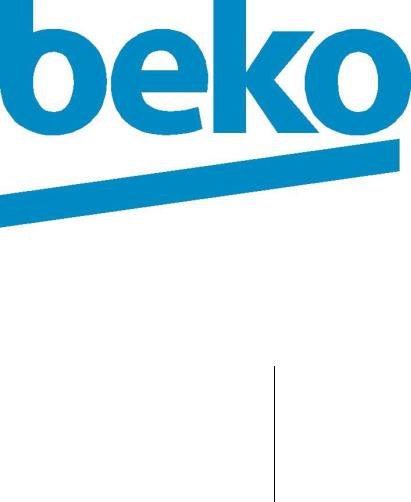
Refrigerator |
RCNA340E20W |
Chłodziarko
Ledusskapis
Šaldytuvas

Please read this user manual first!
Dear Customer,
We hope that your product, which has been produced in modern plants and checked under the most meticulous quality control procedures, will provide you an effective service.
Therefore, read this entire user manual carefully before using the product and keep it as a reference. If you handover the product to someone else, give the user manual as well.
The user manual will help you use the product in a fast and safe way.
Read the manual before installing and operating the product.
Make sure you read the safety instructions.
Keep the manual in an easily accessible place as you may need it later.
Read the other documents given with the product.
Remember that this user manual is also applicable for several other models. Differences between models will be identified in the manual.
Explanation of symbols
Throughout this user manual the following symbols are used:
Important information or useful tips.
Warning against dangerous conditions for life and property.
Warning against electric voltage.

CONTENTS
1 |
Your refrigerator |
44 |
|
|
|
|
|
2 |
Important Safety Warnings |
5 |
|
5 |
|
|
|
Intended use......................................... |
5 |
||
General safety....................................... |
5 |
||
For products with a water dispenser...... |
7 |
||
Child safety............................................ |
7 |
||
Compliance with the AEEE Regulation and Disposing of the Waste Product….. 7
Package information.............................. |
8 |
HCA warning.......................................... |
8 |
Things to be done for energy saving….. 8
3 Installation |
9 |
Points to be paid attention to when the |
|
relocation of the refrigerator.................... |
9 |
Before you start the refrigerator,............ 9
Electrical connection............................ |
10 |
Disposing of the packaging.................. |
10 |
Disposing of your old refrigerator......... |
10 |
Placing and Installation........................ |
10 |
Changing the illumination lamp ........... |
11 |
Changing the door opening direction…11
Adjusting the legs................................ |
11 |
4 |
Preparation |
12 |
5 |
Using your refrigerator |
13 |
Indicator Panel..................................... |
13 |
|
Dual cooling system:............................ |
15 |
|
Freezing fresh food.............................. |
16 |
|
Recommendations for preservation of |
|
|
frozen food........................................... |
17 |
|
Defrosting............................................ |
17 |
|
Placing the food................................... |
17 |
|
Deep-freeze information....................... |
18 |
|
Recommendations for the fresh food |
|
|
compartment........................................ |
18 |
|
6 |
Maintenance and cleaning |
19 |
Protection of plastic surfaces .............. |
19 |
|
7 |
Troubleshooting |
20 |
3 EN
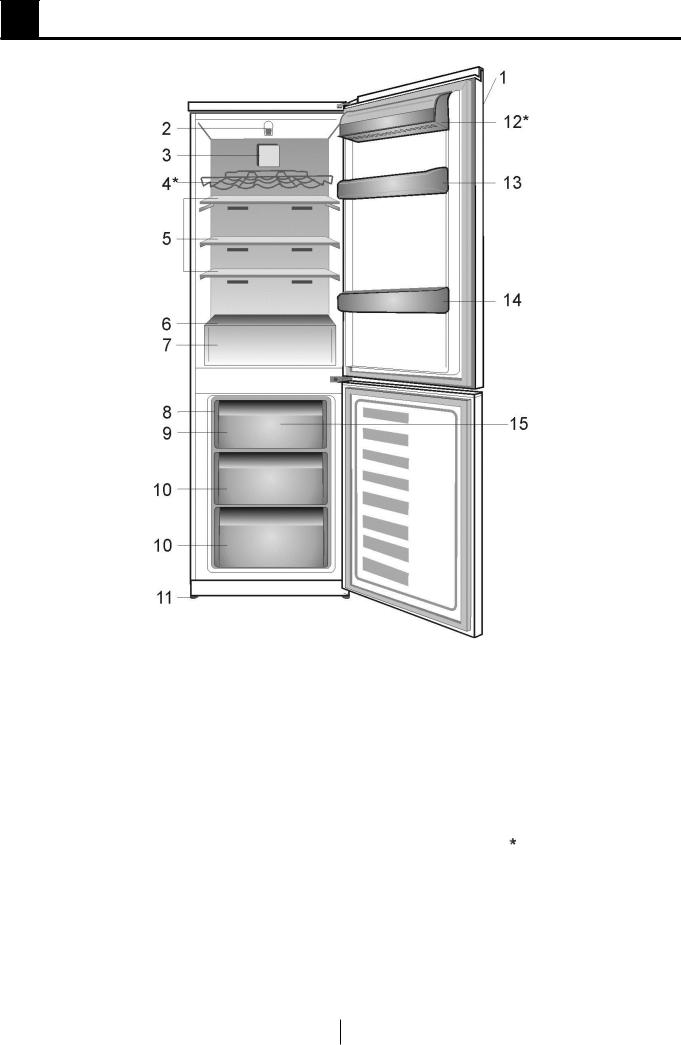
1 Your refrigerator
1. |
Control panel |
9. |
Compartment for quickly freezing |
2. |
Interior light |
10. |
Compartments for frozen froods keeping |
3. |
Fresh Food fan |
11. |
Adjustable front feet |
4. |
*Wine bottles support |
12. |
*Dairy Compartment |
5. |
Adjustable Cabinet shelves |
13. |
Shelf for jars |
6. |
Cover glass |
14. |
Shelf for bottles |
7. |
Salad crispers |
15. |
Freezer fan |
8. |
Ice tray support & ice tray |
|
|
Optional
 Figures that take place in this instruction manual are schematic and may not correspond exactly with your product. If the subject parts are not included in the product you have purchased, then it is valid for other models.
Figures that take place in this instruction manual are schematic and may not correspond exactly with your product. If the subject parts are not included in the product you have purchased, then it is valid for other models.
4 EN

2 Important Safety Warnings
Please review the following information. Failure to observe this information may cause injuries or material damage. Otherwise, all warranty and reliability commitments will become invalid.
The service life of your product is 10 years. During this period, original spare parts will be available to operate the product properly.
Intended use
This product is intended to be used
indoors and in closed areas such as homes;
in closed working environments such as stores and offices;
in closed accommodation areas such as farm houses, hotels, pensions.
It should not be used outdoors.
General safety
When you want to dispose/scrap the product, we recommend you to consult the authorized service in
order to learn the required information and authorized bodies.
Consult your authorized service for all your questions and problems related to the refrigerator. Do not intervene or let someone intervene to the refrigerator without notifying the authorised services.
For products with a freezer compartment; Do not eat cone ice cream and ice cubes immediately after you take them out of the freezer compartment! (This may cause frostbite in your mouth.)
For products with a freezer compartment; Do not put bottled and canned liquid beverages in the freezer compartment. Otherwise, these may burst.
Do not touch frozen food by hand; they may stick to your hand.
Unplug your refrigerator before cleaning or defrosting.
Vapor and vaporized cleaning materials should never be used in cleaning and defrosting processes of your refrigerator. In such cases, the vapor may get in contact with the electrical parts and cause short circuit or electric shock.
Never use the parts on your refrigerator such as the door as a means of support or step.
Do not use electrical devices inside the refrigerator.
Do not damage the parts, where the refrigerant is circulating, with
drilling or cutting tools. The refrigerant that might blow out when the gas channels of the evaporator, pipe extensions or surface coatings are punctured causes skin irritations and eye injuries.
Do not cover or block the ventilation holes on your refrigerator with any material.
Electrical devices must be repaired by only authorised persons. Repairs performed by incompetent persons create a risk for the user.
5 EN
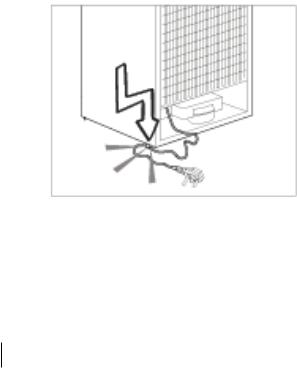
In case of any failure or during a maintenance or repair work,
disconnect your refrigerator’s mains supply by either turning off the relevant fuse or unplugging your appliance.
Do not pull by the cable when pulling off the plug.
Place the beverage with higher proofs tightly closed and vertically.
Never store spray cans containing flammable and explosive substances in the refrigerator.
Do not use mechanical devices or other means to accelerate the
defrosting process, other than those recommended by the manufacturer.
This product is not intended to be used by persons with physical, sensory or mental disorders or unlearned or inexperienced people (including children) unless they are attended by a person who will be responsible for their safety or who will instruct them accordingly for use of the product.
Do not operate a damaged refrigerator. Consult with the service agent if you have any concerns.
Electrical safety of your refrigerator shall be guaranteed only if the earth system in your house complies with standards.
Exposing the product to rain, snow, sun and wind is dangerous with respect to electrical safety.
Contact authorized service when there is a power cable damage to avoid danger.
Never plug the refrigerator into the wall outlet during installation. Otherwise, risk of death or serious injury may arise.
6
This refrigerator is intended for only storing food items. It must not be used for any other purpose.
Label of technical specifications is located on the left wall inside the refrigerator.
Never connect your refrigerator to electricity-saving systems; they may damage the refrigerator.
If there is a blue light on the refrigerator, do not look at the blue light with optical tools.
For manually controlled refrigerators, wait for at least 5 minutes to start the refrigerator after power failure.
This operation manual should be handed in to the new owner of the product when it is given to others.
Avoid causing damage on power cable when transporting the refrigerator. Bending cable may cause fire. Never place heavy objects on power cable.
Do not touch the plug with wet hands when plugging the product.
Do not plug the refrigerator if the wall outlet is loose.
Water should not be sprayed on inner or outer parts of the product for safety purposes.
EN

Do not spray substances containing inflammable gases such as propane gas near the refrigerator to avoid fire and explosion risk.
Never place containers filled with water on top of the refrigerator; in the event of spillages, this may cause electric shock or fire.
Do not overload the refrigerator with food. If overloaded, the food items may fall down and hurt you and damage refrigerator when you open the door.
Never place objects on top of the refrigerator; otherwise, these objects may fall down when you open or close the refrigerator's door.
As they require a precise temperature, vaccines, heat-sensitive medicine and scientific materials
and etc. should not be kept in the refrigerator.
If not to be used for a long time, refrigerator should be unplugged. A possible problem in power cable may cause fire.
The plug's tip should be cleaned regularly with a dry cloth; otherwise, it may cause fire.
Refrigerator may move if adjustable legs are not properly secured on the floor. Properly securing adjustable legs on the floor can prevent the refrigerator to move.
When carrying the refrigerator, do not hold it from door handle. Otherwise, it may be snapped.
When you have to place your product next to another refrigerator or freezer, the distance between devices should be at least 8cm. Otherwise, adjacent side walls may be humidified.
For products with a water dispenser;
Pressure of water mains should be minimum 1 bar. Pressure of water mains should be maximum 8 bars.
Use only potable water.
Child safety
If the door has a lock, the key should be kept away from reach of children.
Children must be supervised to prevent them from tampering with the product.
Compliance with the AEEE Regulation and Disposing of the Waste Product
The symbol  on the product or on packaging indicates that this product may not be treated as household waste. Instead it shall be handed over to the applicable collection point for the recycling of electrical and electronic equipment. By ensuring this product is disposed of correctly, you will help prevent potential negative consequences for the environment and human health, which could otherwise be caused by inappropriate waste handling of this product. For more detailed information about recycling of this product, please contact your local city office, you household waste disposal service or the shop where you purchased the product.
on the product or on packaging indicates that this product may not be treated as household waste. Instead it shall be handed over to the applicable collection point for the recycling of electrical and electronic equipment. By ensuring this product is disposed of correctly, you will help prevent potential negative consequences for the environment and human health, which could otherwise be caused by inappropriate waste handling of this product. For more detailed information about recycling of this product, please contact your local city office, you household waste disposal service or the shop where you purchased the product.
7 EN

Package information
Packaging materials of the product are manufactured from recyclable materials in accordance with our National Environment Regulations. Do not dispose of the packaging materials together with the domestic or other wastes. Take them to the packaging material collection points designated by the local authorities.
Do not forget...
Any recycled substance is an indispensable matter for nature and our national asset wealth.
If you want to contribute to the reevaluation of the packaging materials, you can consult to your environmentalist organizations or the municipalities where you are located.
HCA warning
If your product's cooling system contains R600a:
This gas is flammable. Therefore, pay attention to not damaging the cooling system and piping during usage and transportation. In the event of damage, keep your product away from potential fire sources that can cause the product catch a fire and ventilate the room in which the unit is placed.
Type of gas used in the product is stated in the type label which is on the left wall inside the refrigerator.
Never throw the product in fire for disposal.
Things to be done for energy Saving
Do not leave the doors of your refrigerator open for a long time.
Do not put hot food or drinks in your refrigerator.
Do not overload your refrigerator so that the air circulation inside of it is not prevented.
Do not install your refrigerator under direct sunlight or near heat emitting appliances such as ovens, dishwashers or radiators. Keep your refrigerator at least 30cm away from heat emitting sources and at least 5cm from electrical ovens.
Pay attention to keep your food in closed containers.
For products with a freezer compartment; You can store maximum amount of food items in the freezer when you remove the shelf or drawer of the freezer. Energy consumption value stated for your refrigerator has been determined
by removing freezer shelf or drawer and under maximum load. There
is no harm to use a shelf or drawer according to the shapes and size of food to be frozen.
Thawing frozen food in fridge compartment will both provide energy saving and preserve the food quality.
8 EN
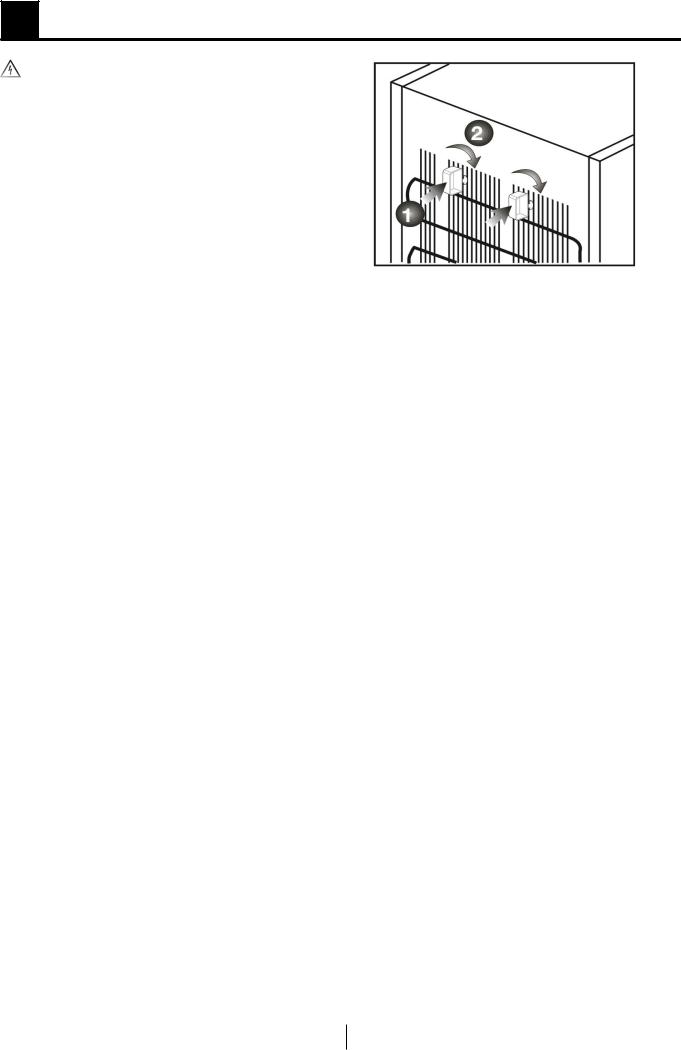
3 Installation
In case the information which are given in the user manual are not taken into account, manufacturer will not assume any liability for this.
Points to be paid attention to when the relocation of the refrigerator
1.Your refrigerator should be unplugged.Before transportation of your refrigerator, it should be emptied and cleaned.
2.Before it is re-packaged, shelves, accessories, crisper, etc. inside your refrigerator should be fixed with adhesive tape and secured against impacts. Package should be bound with a thick tape or sound ropes and the transportation rules on the package should be strictly observed.
3.Original packaging and foam materials should be kept for future transportations or moving.
Before you start the refrigerator,
Check the following before you start to use your refrigerator:
1.Attach 2 plastic wedges as illustrated below. Plastic wedges are intended to keep the distance which will ensure the air circulation between your refrigerator and the wall. (The picture is drawn up as a representation and it is not identical with your product.)
2.Clean the interior of the refrigerator as recommended in the “Maintenance and cleaning” section.
3.Connect the plug of the refrigerator to the wall socket. When the fridge door is opened, fridge internal lamp will turn on.
4.When the compressor starts to operate, a sound will be heard. The liquid and gases sealed within the refrigeration system may also give rise to noise, even if the compressor is
not running and this is quite normal.
5.Front edges of the refrigerator may feel warm. This is normal. These areas are designed to be warm to avoid condensation.
9 EN

Electrical connection
Connect your product to a grounded socket which is being protected by a fuse with the appropriate capacity. Important:
The connection must be in compliance with national regulations.
The power plug must be easily accessible after installation.
Electrical safety of your refrigerator shall be guaranteed only if the earth system in your house complies with standards.
The voltage stated on the label located at left inner side of your product should be equal to your network voltage.
Extension cables and multi plugs must not be used for connection.
A damaged power cable must be replaced by a qualified electrician.
Product must not be operated before it is repaired! There is the risk of electric shock!
Disposing of the packaging
The packing materials may be dangerous for children. Keep the packing materials out of the reach of children or dispose of them by
classifying them in accordance with the waste instructions stated by your local authorities. Do not throw away with regular house waste, throw away on packaging pick up spots designated by the local authorities.
The packing of your refrigerator is produced from recyclable materials.
Disposing of your old
Refrigerator
Dispose of your old refrigerator without giving any harm to the environment.
You may consult your authorized dealer or waste collection center of your municipality about the disposal of your refrigerator.
Before disposing of your refrigerator, cut out the electric plug and, if there are any locks on the door, make them inoperable in order to protect children against any danger.
Placing and Installation
If the entrance door of the room where the refrigerator will be installed is not wide enough for the refrigerator to pass through, then call the authorized service to have them remove the doors of your refrigerator and pass it sideways through the door.
1.Install your refrigerator to a place that allows ease of use.
2.Keep your refrigerator away from heat sources, humid places and direct sunlight.
3.There must be appropriate air ventilation around your refrigerator in order to achieve an efficient operation. If the refrigerator is to be placed in a recess in the wall, there must be at least 5 cm distance with the ceiling and at least 5 cm with the wall. Do not place your product on the materials such as rug or carpet.
4.Place your refrigerator on an even floor surface to prevent jolts.
10 EN

Changing the illumination Lamp
To change the Bulb/LED used for illumination of your refrigerator, call your Authorized Service.
Changing the door opening Direction
Door opening direction of your refrigerator can be changed according to the place you are using it. If this is necessary, please call your nearest Authorized Service.
Adjusting the legs
If your refrigerator is unbalanced; You can balance your refrigerator by
turning its front legs as illustrated in the figure. The corner where the leg exists is lowered when you turn in the direction of black arrow and raised when you
turn in the opposite direction. Taking help from someone to slightly lift the refrigerator will facilitate this process.
11 EN

4Preparation
Your refrigerator should be installed at least 30 cm away from heat sources such as hobs, ovens, central heater and stoves and at least 5 cm away from electrical ovens and should not be located under direct sunlight.
The ambient temperature of the room where you install your refrigerator should at least be 10°C. Operating your refrigerator under cooler conditions is not recommended with regard to its efficiency.
Please make sure that the interior of your refrigerator is cleaned thoroughly.
If two refrigerators are to be installed side by side, there should be at least 2 cm distance between them.
When you operate your refrigerator for the first time, please observe the following instructions during the initial six hours.
The door should not be opened frequently.
It must be operated empty without any food in it.
Do not unplug your refrigerator. If a power failure occurs out of your control, please see the warnings in
the “Recommended solutions for the problems” section.
Original packaging and foam materials should be kept for future transportations or moving.
12 EN
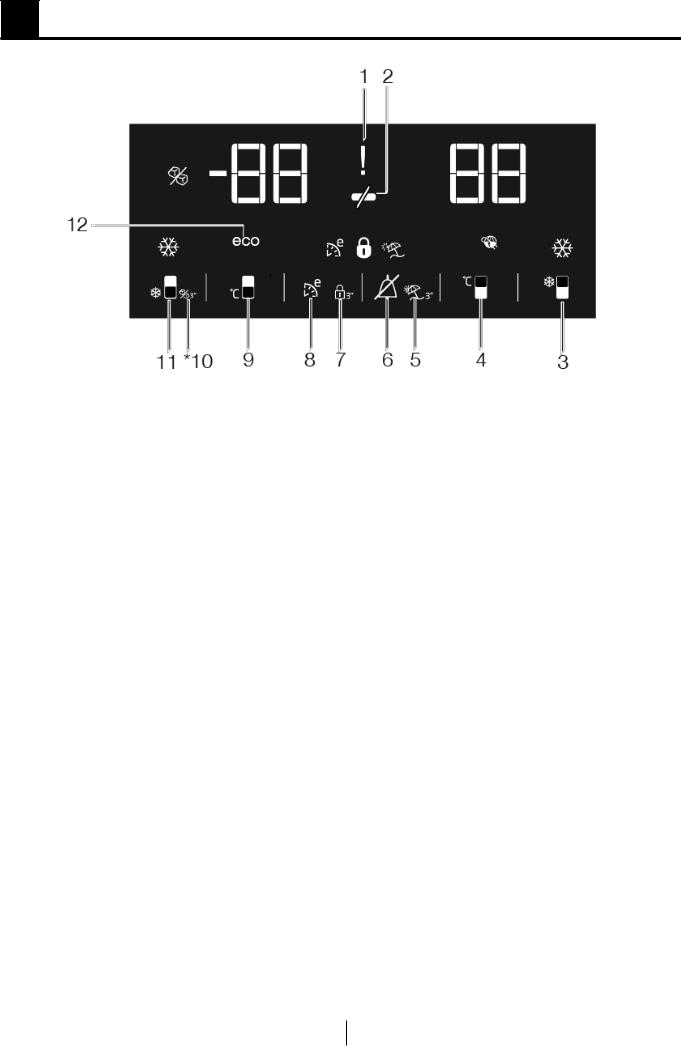
5 Using your refrigerator
Indicator Panel
Indicator panel allows you to set the temperature and control the other functions related to the
product without opening the door of the product. Just press the inscriptions on relevant buttons for
function settings.
1. Power failure/High temperature / error warning indicator
This indicator (!) illuminates during power failure, high temperature failures and error warnings.
During sustained power failures, the highest temperature that the freezer compartment reaches will flash on the digital display. After checking the food located in the freezer compartment ( ) press the alarm off button to clear the warning.
) press the alarm off button to clear the warning.
Please refer to "remedies advised for troubleshooting" section on your manual if you observe that this indicator is illuminated.
2. Energy saving function (display off):
If the product doors are kept closed for a long time energy saving function is automatically activated and energy saving symbol is illuminated. ( ) When energy saving function is activated, all symbols on the display other than energy saving symbol will turn off. When the Energy Saving function is activated, if any button is pressed or the door is opened, energy saving function will be canceled and the symbols on display will return to normal.
) When energy saving function is activated, all symbols on the display other than energy saving symbol will turn off. When the Energy Saving function is activated, if any button is pressed or the door is opened, energy saving function will be canceled and the symbols on display will return to normal.
Energy saving function is activated during delivery from factory and cannot be canceled.
 *Optional: The figures in this user guide are intended as drafts and may not perfectly match your product. If your product does not comprise the relevant parts, the information pertains to other models.
*Optional: The figures in this user guide are intended as drafts and may not perfectly match your product. If your product does not comprise the relevant parts, the information pertains to other models.
13 EN

3.Quick fridge function
The button has two functions. To activate or deactivate the quick cool function press it briefly. Quick Cool indicator will turn off and the product will return to its
normal settings. (
 )
)
Use quick cooling function when you want to quickly cool the food placed
in the fridge compartment. If you want to cool large amounts of fresh food, activate this function before putting the food into the product.
If you do not cancel it, quick cooling will cancel itself automatically after 8 hours or when the fridge compartment reaches to the required temperature.
If you press the quick cooling button repeatedly with short intervals, the electronic circuit protection will be activated and the compressor will not start up immediately.
This function is not recalled when power restores after a power failure.
4. Fridge compartment temperature setting button
Press this button to set the temperature of the fridge compartment to 8, 7,6, 5,4,3, 2, 8... respectively. Press this button to set the fridge compartment
temperature to the desired value. (
 )
)
5.Vacation Function
In order to activate vacation function, press the this button (










 ) for 3 seconds, and the vacation mode indicator (
) for 3 seconds, and the vacation mode indicator ( ) will be activated.
) will be activated.
When the vacation function is activated,
“- -” is displayed on the fridge compartment temperature indicator and no active cooling is performed on the fridge compartment. It is not suitable to keep the food in the fridge compartment when this function is activated. Other compartments shall be continued to be cooled as per their set temperature.
To cancel this function press Vacation function button again.
6. Alarm off warning:
In case of power failure/high temperature alarm, after checking the food located in the freezer compartment press the alarm off button ( ) to clear the warning.
) to clear the warning.
7. Key lock
Press key lock button ( 3’’) simultaneously for 3 seconds. Key lock
3’’) simultaneously for 3 seconds. Key lock
symbol ( ) will light up and key lock mode will be activated. Buttons will not function if the Key lock mode is active. Press key lock button simultaneously for 3 seconds again. Key lock symbol will turn off and the key lock mode will be exited.
) will light up and key lock mode will be activated. Buttons will not function if the Key lock mode is active. Press key lock button simultaneously for 3 seconds again. Key lock symbol will turn off and the key lock mode will be exited.
Press the key lock button if you want to prevent changing of the temperature
setting of the refrigerator ( 3’’).
3’’).
8. Eco fuzzy
Press and hold eco fuzzy button for 1 seconds to activate eco fuzzy function. Refrigerator will start operating in the most economic mode at least 6 hours later and the economic usage indicator will turn on when the function is active
( ). Press and hold eco fuzzy function button for 3 seconds to deactivate eco fuzzy function.
). Press and hold eco fuzzy function button for 3 seconds to deactivate eco fuzzy function.
This indicator is illuminated after 6 hours when eco fuzzy is activated.
14 EN

9. Freezer compartment temperature setting button
Press this button to set the temperature of the freezer compartment to -18,-19,- 20,-21, -22, -23,-24, -18... respectively. Press this button to set the freezer compartment temperature to the desired
value.(  )
)
10. Icematic off indicator
Indicates whether the icematic is on or off. (0/03’’) If On, then the icematic is not operating. To operate the icematic again press and hold the On-Off button for 3 seconds.
Water flow from water tank will stop when this function is selected. However, ice made previously can be taken from the icematic.
11. Quick freeze function button/ icematic on-off button
Press this button to activate or deactivate the quick freezing function. When you activate the function, the freezer compartment will be cooled to a temperature lower than the set value.
(  )
)
To turn on and off the icematic press and hold it for 3 seconds.
Use the quick freeze function when you want to quickly freeze the food placed in fridge compartment. If you want to freeze large amounts of fresh food, activate this function before putting the food into the product.
If you do not cancel it, Quick Freeze will cancel itself automatically after 4 hours or when the fridge compartment reaches to the required temperature.
This function is not recalled when power restores after a power failure.
12. Economic usage indicator
Indicates that the product is running in energy-efficient mode. (eco)This indicator will be active if the Freezer Compartment temperature is set to -18 or the energy efficient cooling is being performed due to Eco-Extra function.
Economic usage indicator is turned off when quick cooling or quick freeze functions are selected.
Dual cooling system:
Your refrigerator is equipped with two separate cooling systems to cool the fresh food compartment and freezer compartment. Thus, air in the fresh food compartment and freezer compartment do not get mixed.
Thanks to these two separate cooling systems, cooling speed is much higher than other refrigerators. Odors in the compartments do not get mixed. Also additional power saving is provided since the defrosting is performed individually.
15 EN
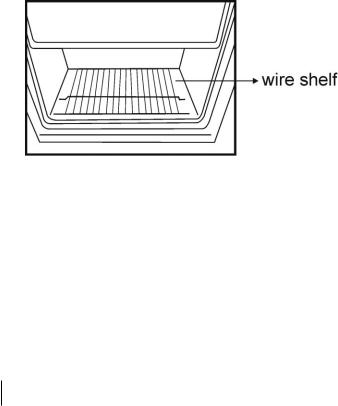
Freezing fresh food
Wrap or cover the food before placing them in the refrigerator.
Hot food must cool down to the room temperature before putting them in the refrigerator.
The foodstuff that you want to freeze must be fresh and in good quality.
Foodstuff must be divided into portions according to the family’s daily or meal based consumption needs.
Foodstuff must be packaged in an airtight manner to prevent them from drying even if they are going to be kept for a short time.
Materials to be used for packagings must be resistant to cold and humidity and they must be airtight. The packaging material of the food must be at a sufficient thickness and durability. Otherwise the food hardened due to freezing may puncture the packaging. It is important for the packaging to be closed securely for safe storage of the food.
Frozen food must be used immediately after they are thawed and they should never be re-frozen.
Placing warm food into the freezer compartment causes the cooling system to operate continuously until the food is frozen solid.
Please observe the following instructions to obtain the best results.
1.Do not freeze too large quantities of food at one time. The quality of the food is best preserved when it is frozen right through to the core as quickly as possible.
2.Take special care not to mix already frozen food and fresh food.
3.Make sure raw foods are not in contact with cooked foods in the fridge.
4.Maximum frozen food storage volume is achieved without using the drawers provided in the freezer compartment. Energy consumption of your appliance is declared while the freezer compartment is fully loaded on shelves without the use of the drawers.Use the given wire shelf at the bottom of the freezer compartment for a better energy consumption performance.
5.It is recommended that you place foodstuffs on top shelf of freezer for initial freezing.
16 EN

Freezer |
Fridge |
Explanations |
|
Compartment |
Compartment |
|
|
Setting |
Setting |
|
|
|
|
|
|
-18°C |
4°C |
This is the normal recommended setting. |
|
|
|
|
|
-20, -22 or -24°C |
4°C |
These settings are recommended when |
|
the ambient temperature exceeds 30°C. |
|||
|
|
||
|
|
|
|
|
|
Use when you wish to freeze your food in |
|
Quick Freeze |
4°C |
a short time. If is recommended to be |
|
used to maintain the quality of meat and |
|||
|
|
||
|
|
fish products. |
|
|
|
|
|
|
|
If you think that your fridge compartment |
|
-18°C or colder |
2°C |
is not cold enough because of the hot |
|
conditions or frequent opening and |
|||
|
|
||
|
|
closing of the door. |
|
|
|
|
|
|
|
You can use it when your fridge |
|
|
|
compartment is overloaded or if you wish |
|
-18°C or colder |
Quick Fridge |
to cool down your food rapidly. It is |
|
recommended that you activate quick |
|||
|
|
||
|
|
fridge function 4-8 hours before placing |
|
|
|
the food. |
|
|
|
|
Recommendations for preservation of frozen food
Pre-packed commercially frozen food should be stored in accordance with the frozen food manufacturer's instructions in a frozen food storage compartment.
To ensure that the high quality supplied by the frozen food manufacturer and the food retailer is maintained, following points should be noted:
1.Put packages in the freezer as quickly as possible after purchase.
2.Ensure that contents of the package are labeled and dated.
3.Do not exceed "Use By", "Best Before" dates on the packaging.
Defrosting
The freezer compartment defrosts automatically.
17
Placing the food
Freezer |
Various frozen food |
|
such as meat, fish, ice |
||
compartment |
||
cream, vegetables and |
||
shelves |
||
etc. |
||
|
||
|
|
|
Egg holder |
Egg |
|
|
|
|
Fridge |
Food in pans, covered |
|
compartment |
plates and closed |
|
shelves |
containers |
|
|
|
|
Fridge |
Small and packaged |
|
food or drinks (such as |
||
compartment |
||
milk, fruit juice and |
||
door shelves |
||
beer) |
||
|
||
|
|
|
Crisper |
Vegetables and fruits |
|
|
|
|
Fresh zone |
Delicatessen products |
|
(cheese, butter, salami |
||
compartment |
||
and etc.) |
||
|
||
|
|
EN

Deep-freeze information
Food must be frozen as rapidly as possible when they are put in the freezer in order to keep them in good quality.
The TSE norm requires (according to certain measurement conditions) the refrigerator to freeze at least 4.5 kg of foodstuff at 32°C ambient temperature to -18°C or lower within 24 hours for every 100-liters of freezer volume.
It is possible to preserve the food for a long time only at -18°C or lower temperatures.
You can keep the freshness of food for many months (at -18°C or lower temperatures in the deep freeze).
WARNING! 
Foodstuff must be divided into portions according to the family’s daily or meal based consumption needs.
Foodstuff must be packaged in an airtight manner to prevent them from drying even if they are going to be kept for a short time.
Materials necessary for packaging:
Cold resistant adhesive tape
Self-adhesive label
Rubber rings
Pen
Materials to be used for packaging the foodstuff must be tear-proof and resistant to cold, humidity, dour, oils and acids.
Foodstuff to be frozen should not be allowed to come in contact with the previously frozen items to prevent their partial thawing. Thawed out food must be consumed and must not be frozen again.
Recommendations for the fresh food compartment
*optional
Do not allow the food to touch the temperature sensor in fresh food compartment. To allow the fresh food compartment keep its ideal storage temperature, sensor must not be hindered by food.
Do not place hot foods in the product.
18 EN
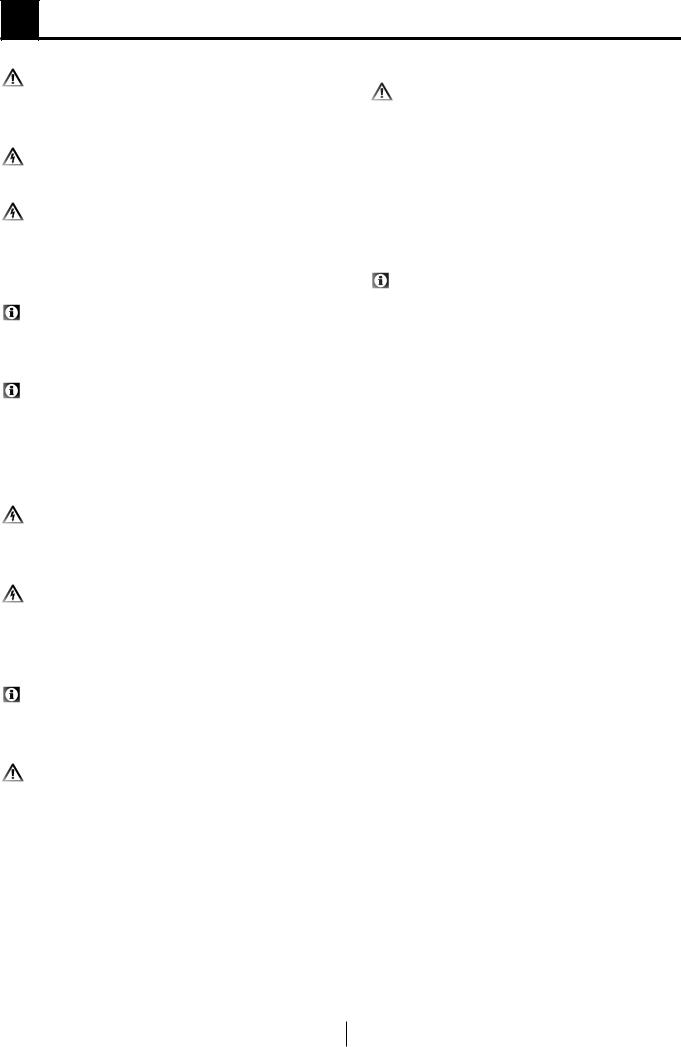
6 Maintenance and cleaning
Never use gasoline, benzene or similar substances for cleaning purposes.
We recommend that you unplug the ppliance before cleaning.
Never use any sharp abrasive instrument, soap, household cleaner, detergent and wax polish for cleaning.
Use lukewarm water to clean the cabinet of your refrigerator and wipe it dry.
Use a damp cloth wrung out in a solution of one teaspoon of bicarbonate of soda to one pint of water to clean the interior and wipe it dry.
Make sure that no water enters the lamp housing and other electrical items.
If your refrigerator is not going to be used for a long period of time, unplug the power cable, remove all food, clean it and leave the door ajar.
Check door seals regularly to ensure they are clean and free from food particles.
To remove door racks, remove all the contents and then simply push the door rack upwards from the base.
Never use cleaning agents or water that contain chlorine to clean the outer surfaces and chromium coated parts of the product. Chlorine causes corrosion on such metal surfaces.
Protection of plastic surfaces
Do not put the liquid oils or oil-cooked meals in your refrigerator in unsealed containers as they damage the plastic surfaces of your refrigerator. In case of spilling or smearing oil on the plastic surfaces, clean and rinse the relevant part of the surface at once with warm water.
19 EN

7 Troubleshooting
Please review this list before calling the service. It will save your time and money. This list includes frequent complaints that are not arising from defective workmanship or material usage. Some of the features described here may not exist in your product.
The refrigerator does not operate.
•The plug is not inserted into the socket correctly. >>>Insert the plug into the socket securely.
•The fuse of the socket which your refrigerator is connected to or the main fuse have blown out. >>>Check the fuse.
Condensation on the side wall of the fridge compartment (MULTIZONE, COOL CONTROL and FLEXI ZONE).
•Ambient is very cold. >>>Do not install the refrigerator in places where the temperature falls below 10 °C.
•Door has been opened frequently. >>>Do not open and close the door of refrigerator frequently.
•Ambient is very humid. >>>Do not install your refrigerator into highly humid places.
•Food containing liquid is stored in open containers. >>>Do not store food with liquid content in open containers.
•Door of the refrigerator is left ajar. >>>Close the door of the refrigerator.
•Thermostat is set to a very cold level. >>>Set the thermostat to a suitable level.
Compressor is not running
•Protective thermic of the compressor will blow out during sudden power failures or plug-out plug-ins as the refrigerant pressure in the cooling system of the refrigerator has not been balanced yet. The refrigerator will start running
approximately after 6 minutes. Please call the service if the refrigerator does not startup at the end of this period.
•The fridge is in defrost cycle. >>>This is normal for a full-automatically defrosting refrigerator. Defrosting cycle occurs periodically.
•The refrigerator is not plugged into the socket. >>>Make sure that the plug is fit into the socket.
•Temperature settings are not made correctly. >>>Select the suitable temperature value.
•There is a power outage. >>>Refrigerator returns to normal operation when the power restores.
The operation noise increases when the refrigerator is running.
•The operating performance of the refrigerator may change due to the changes in the ambient temperature. It is normal and not a fault.
20 EN
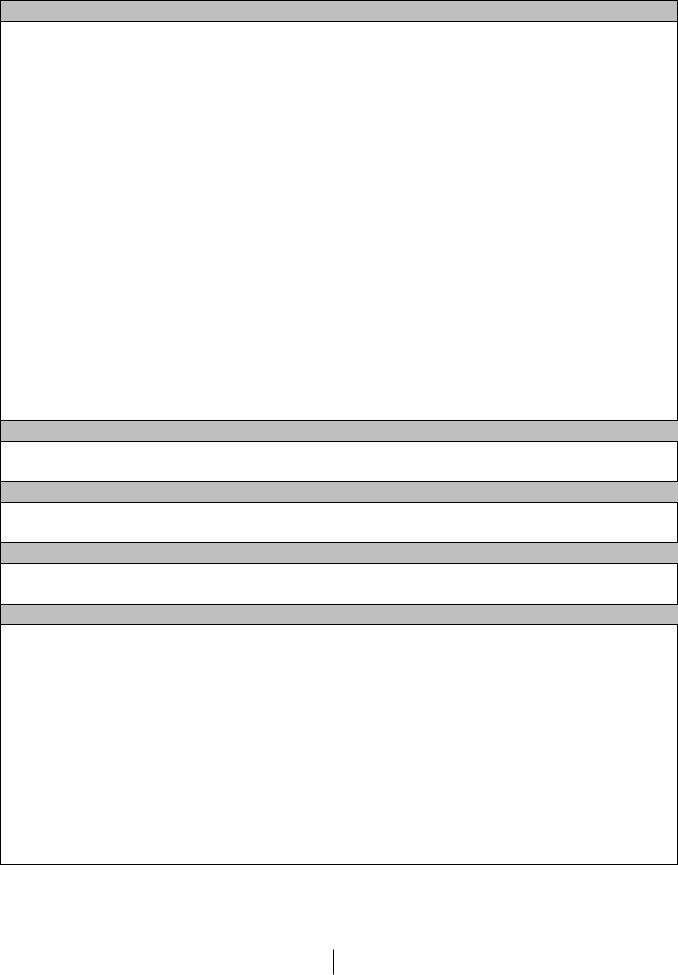
The refrigerator is running frequently or for a long time.
•New product may be wider than the previous one. Larger refrigerators operate for a longer period of time.
•The room temperature may be high. >>>It is normal that the product operates for longer periods in hot ambient.
•The refrigerator might be plugged in recently or might be loaded with food.
>>>When the refrigerator is plugged in or loaded with food recently, it will take longer for it to attain the set temperature. This is normal.
•Large amounts of hot food might be put in the refrigerator recently. >>>Do not put hot food into the refrigerator.
•Doors might be opened frequently or left ajar for a long time. >>>The warm air that has entered into the refrigerator causes the refrigerator to run for longer periods. Do not open the doors frequently.
•Freezer or fridge compartment door might be left ajar. >>>Check if the doors are closed completely.
•The refrigerator is adjusted to a very low temperature. >>>Adjust the refrigerator temperature to a warmer degree and wait until the temperature is achieved.
•Door seal of the fridge or freezer may be soiled, worn out, broken or not properly seated. >>>Clean or replace the seal. Damaged/broken seal causes the refrigerator to run for a longer period of time in order to maintain the current temperature.
Freezer temperature is very low while the fridge temperature is sufficient.
• The freezer temperature is adjusted to a very low value. >>>Adjust the freezer temperature to a warmer degree and check.
Fridge temperature is very low while the freezer temperature is sufficient.
• The fridge temperature is adjusted to a very low value. >>>Adjust the fridge temperature to a warmer degree and check.
Food kept in the fridge compartment drawers is frozen.
•The fridge temperature is adjusted to a very high value. >>>Adjust the fridge temperature to a lower value and check.
Temperature in the fridge or freezer is very high.
•The fridge temperature is adjusted to a very high value. >>>Fridge compartment temperature setting has an effect on the temperature of the freezer. Change the temperatures of the fridge or freezer and wait until the relevant compartments attain a sufficient temperature.
•Doors are opened frequently or left ajar for a long time. >>>Do not open the doors frequently.
•Door is ajar. >>>Close the door completely.
•The refrigerator is plugged in or loaded with food recently. >>>This is normal.
When the refrigerator is plugged in or loaded with food recently, it will take longer for it to attain the set temperature.
•Large amounts of hot food might be put in the refrigerator recently. >>>Do not put hot food into the refrigerator.
21 EN

Vibrations or noise.
•The floor is not level or stable. >>> If the refrigerator rocks when moved slowly, balance it by adjusting its feet. Also make sure that the floor is strong enough to carry the refrigerator, and level.
•The items put onto the refrigerator may cause noise. >>>Remove the items on top of the refrigerator.
There are noises coming from the refrigerator like liquid flowing, spraying, etc.
•Liquid and gas flows occur in accordance with the operating principles of your refrigerator. It is normal and not a fault.
Whistle comes from the refrigerator.
•Fans are used in order to cool the refrigerator. It is normal and not a fault.
Condensation on the inner walls of refrigerator.
•Hot and humid weather increases icing and condensation. It is normal and not a fault.
•Doors are opened frequently or left ajar for a long time. >>>Do not open the
doors frequently. Close them if they are open.
• Door is ajar. >>>Close the door completely.
Humidity occurs on the outside of the refrigerator or between the doors.
•There might be humidity in the air; this is quite normal in humid weather. When the humidity is less, condensation will disappear.
Bad odour inside the refrigerator.
•No regular cleaning is performed. >>>Clean the inside of the refrigerator regularly with a sponge, lukewarm water or carbonate dissolved in water.
•Some containers or package materials may cause the smell. >>>Use a different container or different brand packaging material.
•Food is put into the refrigerator in uncovered containers. >>>Keep the food in closed containers. Microorganisms spreading out from uncovered containers can cause unpleasant odours.
•Remove the foods that have expired best before dates and spoiled from the refrigerator.
The door is not closing.
•Food packages are preventing the door from closing. >>>Replace the packages that are obstructing the door.
•The refrigerator is not completely even on the floor. >>>Adjust the feet to balance the refrigerator.
•The floor is not level or strong. >>>Make sure that the floor is level and capable to carry the refrigerator.
Crispers are stuck.
• The food is touching the ceiling of the drawer. >>>Rearrange food in the drawer.
22 EN

Prosimy najpierw przeczytać tę instrukcję obsługi!
Drodzy Klienci,
Mamy nadzieję, że nasz wyrób, wyprodukowany w nowoczesnym zakładzie i sprawdzony według najbardziej drobiazgowych procedur kontroli jakości, będzie Wam dobrze służył.
Dlatego prosimy uważnie przeczytać całą instrukcję obsługi chłodziarki przed jej użyciem i zachować ją do późniejszego wglądu. Przy przekazaniu tej chłodziarki komuś innemu, prosimy także przekazać tę instrukcję.
Niniejsza instrukcja obsługi pomoże korzystać z tej chłodziarki sprawnie i bezpiecznie.
Proszę przeczytać tę instrukcję przed zainstalowaniem i uruchomieniem chłodziarki.
Prosimy na pewno przeczytać wskazówki na temat bezpieczeństwa.
Prosimy przechowywać tę instrukcję w łatwo dostępnym miejscu, bo może się przydać później.
Prosimy przeczytać również inne dokumenty dostarczone wraz z chłodziarką.
Zwracamy uwagę, że instrukcja ta odnosi się także do kilku innych modeli. Różnice pomiędzy modelami zostaną wskazane w instrukcji.
Objaśnienie symboli
W niniejszej instrukcji obsługi używa się następujących symboli:
Wa ne informacje i przydatne wskaz wki.
Ostrze enie przed zagro eniem ycia i mienia.
Ostrzeżenie przed porażeniem elektrycznym.

SPIS TREŚCI
1 Oto Wasza chłodziarka |
34 |
2 Ważne zasady bezpieczeństwa |
4 |
Zamierzone przeznaczenie.................... |
4 |
Ogólne zasady bezpieczeństwa............. |
4 |
Dotyczy modeli z dozownikiem wody..... |
6 |
Bezpieczeństwo dzieci........................... |
6 |
Zgodność z przepisami AEEE i utylizacja |
|
zużytej chłodziarki…................…..…..... 6 |
|
Informacje na opakowaniu..................... |
7 |
Ostrzeżenie HCA................................... |
7 |
Co robić, aby oszczędzać energię......... |
7 |
3 Instalacja |
8 |
Na co należy zwrócić uwagę przy |
|
przenoszeniu chłodziarki........................ |
8 |
Przed uruchomieniem chłodziarki.......... |
8 |
Połączenia elektryczne.......................... |
9 |
Utylizacja opakowania............................ |
9 |
Utylizacja starej chłodziarki.................... |
9 |
Ustawienie i instalacja............................ |
9 |
Wymiana lampki oświetlenia.................. |
9 |
Nastawianie nóżek................................. |
9 |
4 Przygotowanie |
11 |
5 Obsługa chłodziarki |
12 |
Panel wskaźników............................... |
12 |
Zamrażanie żywności świeżej ………..15 |
|
Zalecenia co do przechowywania |
|
mrożonek............................................ |
16 |
Rozmrażanie....................................... |
16 |
Zalecenia co do komory na żywność |
|
świeżą................................................. |
16 |
6 Konserwacja i czyszczenie |
17 |
Jak unikać nieprzyjemnych |
|
zapachów.......................…………..…. 17 |
|
Zabezpieczenia powierzchni |
|
plastykowych....................................... |
17 |
7 Rozwiązywanie problemów |
18 |
2 PL

1 Oto chłodziarka
1. |
Panel wskaźników |
10. |
Komory do przechowywania żywności |
2. |
Oświetlenie wewnętrzne |
|
mrożonej |
3. |
Wentylator komory chłodzenia |
11. |
Nastawiane nóżki przednie |
4. *Podpěra na láhve vína |
12. |
*Balkonik na nabiał |
|
5. |
Nastawialne półki komory |
13. |
Półka na słoiki |
|
chłodziarki |
14. |
Półka na butelki |
6. |
Szyba pokrywy |
15. |
Wentylator komory zamrażania |
7.Pojemniki na świeże warzywa
8.Podpory tacki na lód i tacka na lód
9.Komora szybkiego zamrażania
 Rysunki w niniejszej instrukcji to tylko schematy i nie muszą
Rysunki w niniejszej instrukcji to tylko schematy i nie muszą
ściśle odpowiadać Waszemu modelowi chłodziarki. Jeśli pewnych części nie ma w Waszej chłodziarce, to znaczy, że odnoszą się do innych modeli.
3 PL

2 Ważne ostrzeżenia dot. bezpieczeństwa
Prosimy przeczytać następujące ostrzeżenia.
Niestosowanie się do tej informacji może spowodować obrażenia lub szkody materialne.
W takim przypadku tracą ważność wszelkie gwarancje i zapewnienia niezawodności.
Okres użytkowania tego wyrobu to 10 lat. W tym okresie dostępne będą oryginalne części zamienne potrzebne do jego prawidłowej pracy.
Zamierzone przeznaczenie
Chłodziarka jest przeznaczona do używania we wnętrzach i obszarach zamkniętych, takich jak domy;
w zamkniętych pomieszczeniach roboczych, takich jak sklepy i biura;
w zamkniętych pomieszczeniach mieszkalnych, takich jak domy w gospodarstwach wiejskich, hotele i pensjonaty.
Nie należy używać jej na dworze.
Ogólne zasady bezpieczeństwa
Gdy zechcecie pozbyć się tego urządzenia/zezłomować je, zalecamy skonsultowanie się z autoryzowanym serwisem, aby uzyskać potrzebne informacje i poznać kompetentne podmioty.
W sprawach wszelkich pytań i problemów związanych z tą chłodziarką konsultujcie się z Waszym autoryzowanym serwisem.
Bez powiadomienia autoryzowanego serwisu nie interweniujcie sami i nie pozwalajcie interweniować innym w funkcjonowanie chłodziarki.
Dotyczy modeli z zamrażalnikiem: Nie jedzcie lodów ani kostek lodu bezpośrednio po wyjęciu ich z zamrażalnika! (Może to spowodować odmrożenia w ustach).
Dotyczy modeli z zamrażalnikiem: Nie wkładajcie do zamrażalnika napojów w butelkach ani w puszkach. Mogą wybuchnąć.
Nie dotykajcie palcami mrożonej żywności, bo może do nich przylgnąć.
Przed czyszczeniem lub rozmrażaniem chłodziarki wyjmujcie jej wtyczkę z gniazdka.
Do czyszczenia i rozmrażania chłodziarki nie wolno stosować pary ani środków czyszczących w tej postaci. W takich przypadkach para może zetknąć się z częściami urządzeń elektrycznych i spowodować zwarcie albo porażenie elektryczne.
Nie wolno używać żadnych części chłodziarki, takich jak drzwiczki, jako podpory ani stopnia.
Wewnątrz chłodziarki nie wolno używać urządzeń elektrycznych.
Nie wolno uszkadzać obwodu chłodzącego, w którym krąży środek chłodzący, narzędziami do wiercenia i cięcia. Środek chłodzący, który może wybuchnąć skutkiem przedziurawienia przewodów gazowych parownika, przedłużeń rur lub powłok powierzchni, powoduje podrażnienia skóry lub obrażenia oczu.
Nie przykrywajcie żadnym materiałem ani nie blokujcie otworów wentylacyjnych w chłodziarce.
Urządzenia elektryczne mogą naprawiać tylko osoby z uprawnieniami.
Naprawy wykonywane przez osoby niekompetentne stwarzają zagrożenie dla użytkowników.
4 PL
